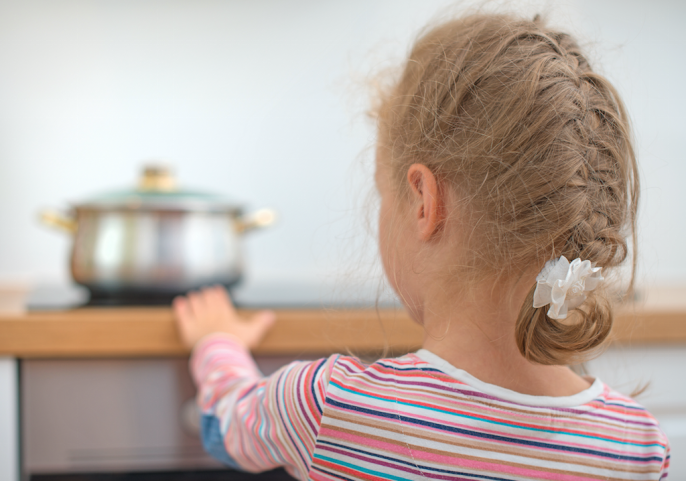 Protecting children from unintentional injuries is very important. Children develop at different rates and it is hard to keep an eye on them all the time. Practicing safety based on children’s’ developmental stages, keeps them safe and secure.
Protecting children from unintentional injuries is very important. Children develop at different rates and it is hard to keep an eye on them all the time. Practicing safety based on children’s’ developmental stages, keeps them safe and secure.
Children are going to run, fall down and take risks when playing. This checklist can help you look at your home and check for hazards and possible dangers to children. This checklist highlights ways to keep your children safe. When checking your home take a few minutes and look at it from a child’s view.
- Anything that fits in a child’s mouth will probably go there.
- Look for climbing opportunities and things that can be pulled down from above.
- Watch for sharp corners, protrusions, and objects a child might fall on.
- Children are very inquisitive and will pry at vent covers, electric outlets, etc.
- Does your home have a list of emergency telephone numbers near the telephone or in your cell phone?
- Does your home have a safe, age-appropriate place for the child to sleep?
- Is your home child/baby proofed (electrical outlets covered, safety latches on cabinet doors, cleaning supplies and other dangerous objects stored out of reach, choking hazards are out of reach)?
- Are televisions positioned high or bolted to the wall so they do not get pulled over?
- Are medicines in original container and in a locked cabinet out of child’s reach?
- Are cleaning supplies stored away from food and out of the reach of children?
- Does your home have working smoke detectors?
- Does your home have a working fire extinguisher?
- Do you have a fire escape plan?
- Are drapery/blind cords secured and out of the reach of children?
- Are pot handles turned to the back of the stove when cooking?
- Are children always supervised when they are in or near water?
- Is your water heater temperature set at 120 degrees F?
- Are toys clean and age-appropriate?
- Does your home have a complete first aid kit?
- Are your children not exposed to second hand smoke?
- Are the children always supervised when playing indoors and outdoors?
(Adapted with permission from the Home Safety Checklist for Families with Young Children, Safe Kids Lincoln-Lancaster County)
Make sure to follow The Learning Child on social media for more research-based early childhood education resources!
